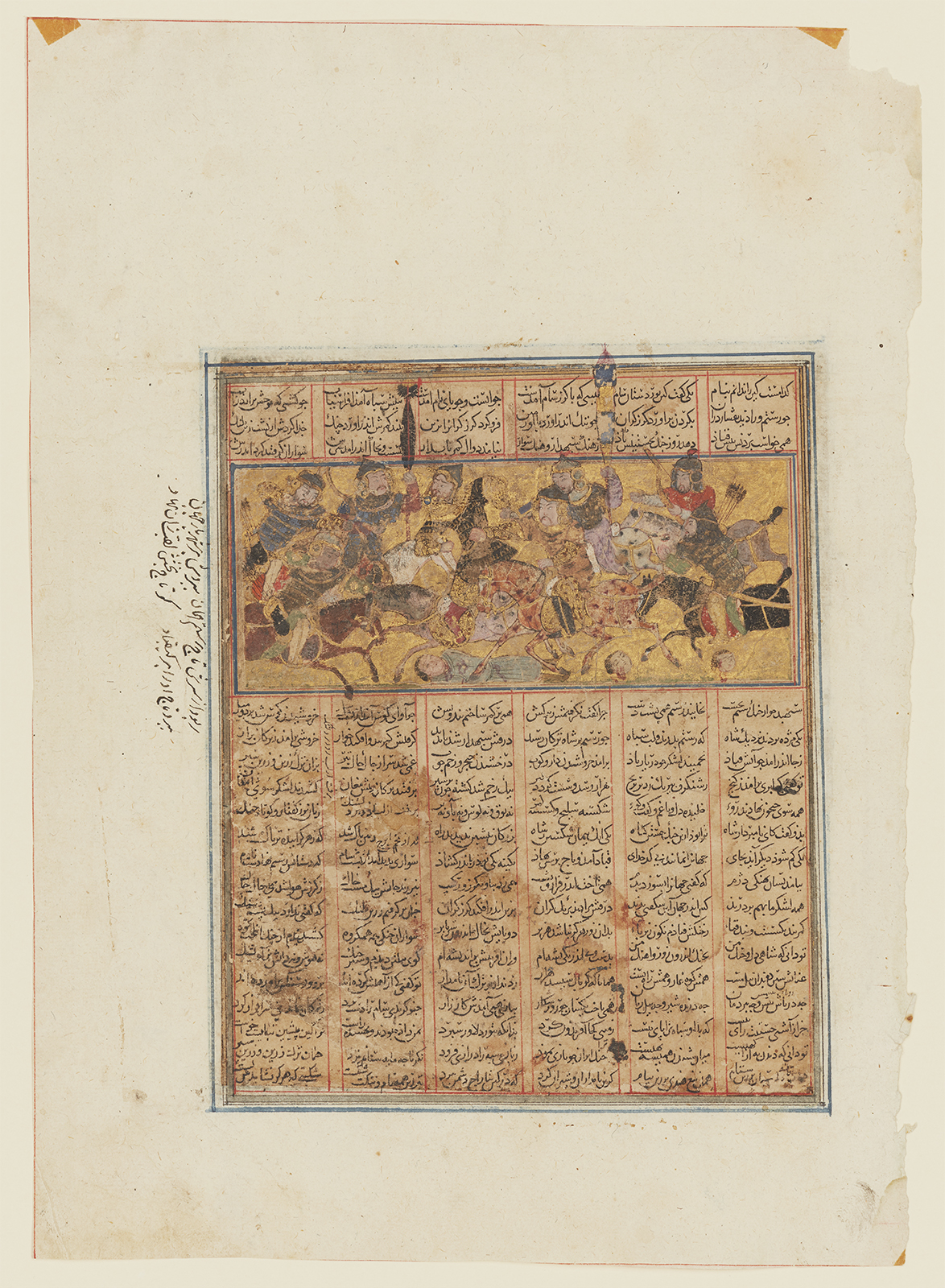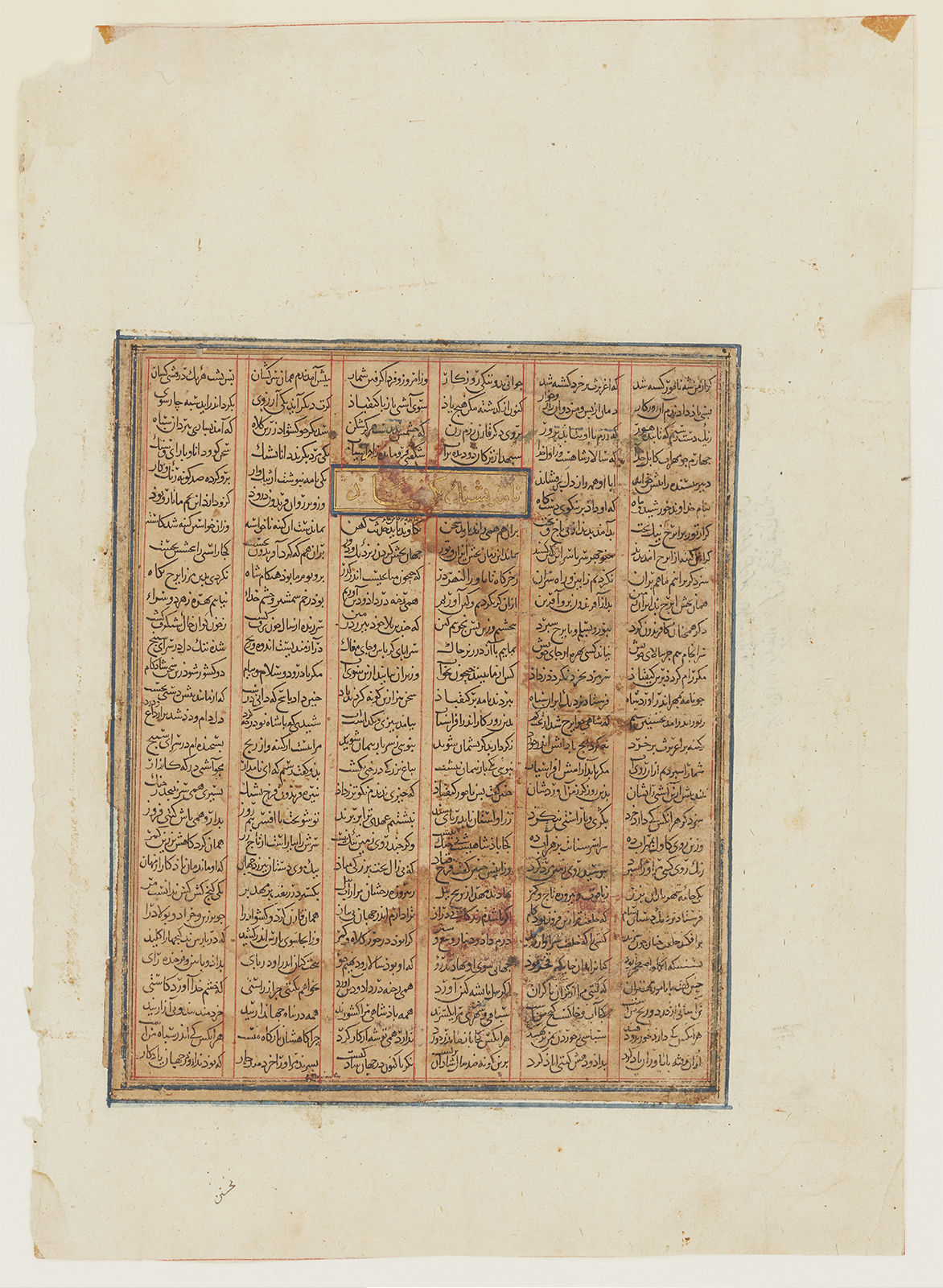Click on the image to zoom
Rustam Lifts Afrasiyab From His Saddle
Folio from a dispersed copy of Firdausi’s Shahnameh (Book of Kings)
- Accession Number:AKM18
- Place:Western Iran
- Dimensions:26.5 x 19 cm
- Date:late 13th or early 14th century
- Materials and Technique:ink, colours, gold, and silver on paper
This folio from the dispersed copy of the “Second Small” Shahnameh (Book of Kings) comes from the Shahnameh’s second, legendary, section. It is largely devoted to the exploits of Iran’s greatest hero, the elephant-like Rustam, along with his albino father Zal and grandfather Sam.
Rustam, the son of Zal and Rudabeh, was a marvel of size and strength from the day of his birth; capable of prodigious feats even as a child, he grew quickly to manhood, proving his valour by overcoming a series of seven great challenges (in Persian, haft khwān). In so doing, he was often assisted by his magnificent steed, “Rustam’s Rakhsh.” He was then prepared to perform great services for the legendary shahs who succeeded Manuchihr.
Early in these years, Rustam had a battlefield encounter with Afrasiyab, eventual ruler of Turan [1] and chief instigator of the longest-lasting conflict of Firdausi’s Shahnameh, that between Iran and Turan.
See AKM16 for an introduction to the “Second Small” Shahnameh.
Further Reading
After a furious battle between the Iranians and the Turanians, Rustam met Afrasiyab in single-mounted combat. Grabbing him by the belt, the Persian hero lifted the Turanian from his saddle but—ominously—the belt broke before Rustam could disable Afrasiyab. Seemingly a mere accident, this failure would have momentous consequences throughout this second section of Firdausi’s great epic (AKM22).
The action plays against the same golden ground of another horizontal strip stretching across the entire written surface of the page, as in so many other paintings from this pair of early Shahnameh manuscripts. Rustam and Afrasiyab are in the centre, each “attended” by mounted troops, one from each side carrying the standards—which rise above the picture and into the lines of text, and break through the ruling, the “frame” surrounding the text. Rustam and Rakhsh are garbed and coloured as this pair will be for the six following centuries of Shahnameh illustration: Rustam wears a striped tiger-skin tunic, Rakhsh is a dappled reddish colour, his hide” like saffron-petals, mottled red and gold.”
The Aga Khan Museum Collection has four folios from the “Second Small” Shahnameh, AKM16, AKM17, AKM18 and AKM85. Along with one folio from the “First Small” Shahnameh, AKM19.
— Eleanor Sims
Notes
[1] The land of the Turks (for Firdausi, east of the Oxus River)
Note: This online resource is reviewed and updated on an ongoing basis. We are committed to improving this information and will revise and update knowledge about this object as it becomes available.




